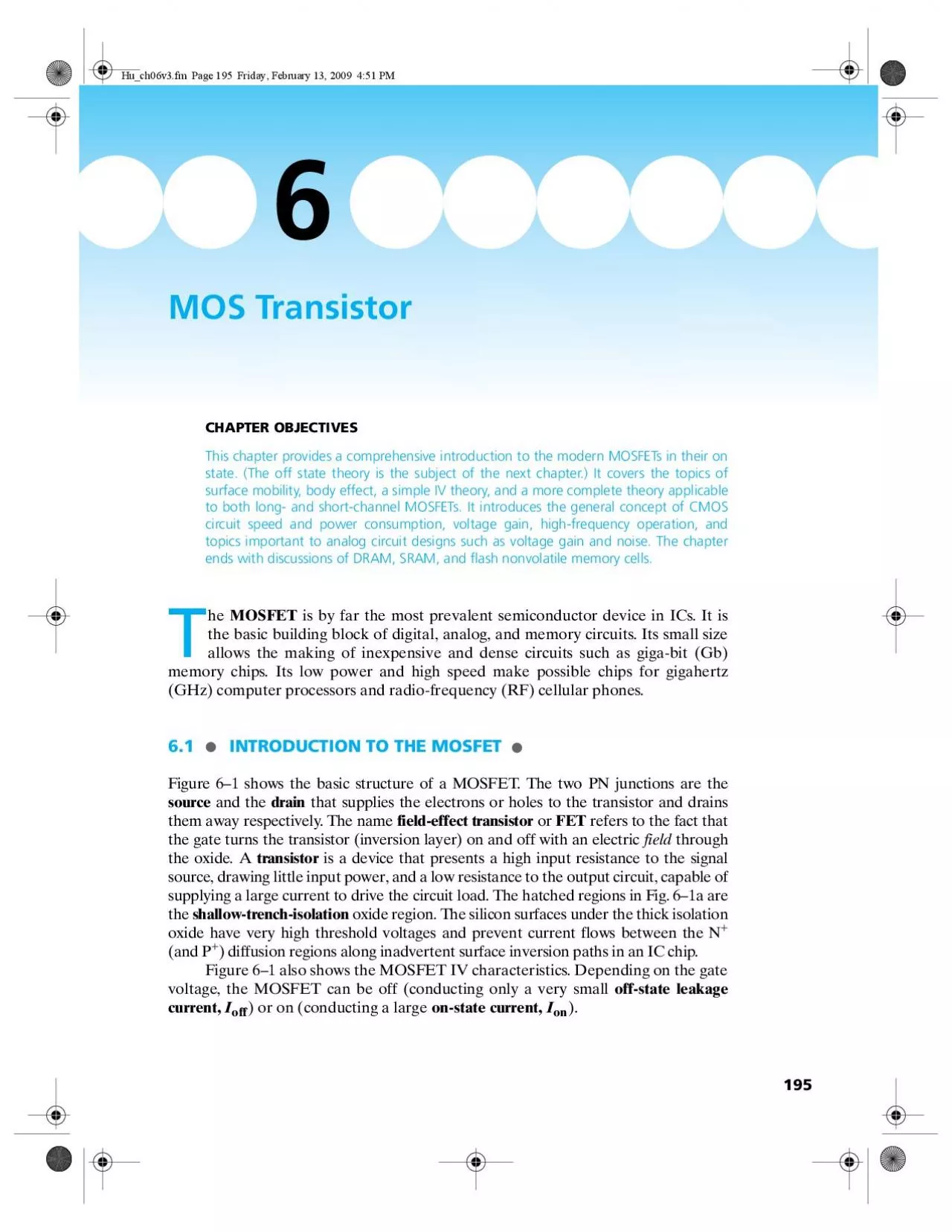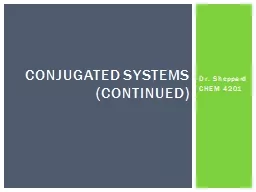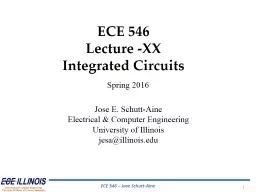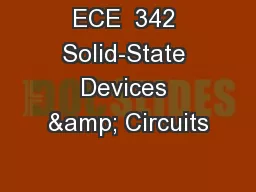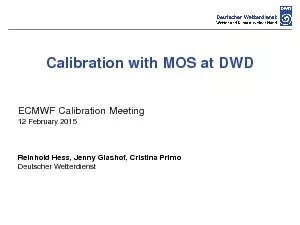PDF-MOS TransistorCHAPTER OBJECTIVESThis chapter provides a comprehensive
Author : sadie | Published Date : 2021-08-25
Huch06v3fm Page 195 Friday February 13 2009 451 PMMOS TransistorAt the most basic level a MOSFET may be thought of as an onoff switch asshown in Fig 62b The gate
Presentation Embed Code
Download Presentation
Download Presentation The PPT/PDF document "MOS TransistorCHAPTER OBJECTIVESThis cha..." is the property of its rightful owner. Permission is granted to download and print the materials on this website for personal, non-commercial use only, and to display it on your personal computer provided you do not modify the materials and that you retain all copyright notices contained in the materials. By downloading content from our website, you accept the terms of this agreement.
MOS TransistorCHAPTER OBJECTIVESThis chapter provides a comprehensive: Transcript
Download Rules Of Document
"MOS TransistorCHAPTER OBJECTIVESThis chapter provides a comprehensive"The content belongs to its owner. You may download and print it for personal use, without modification, and keep all copyright notices. By downloading, you agree to these terms.
Related Documents

